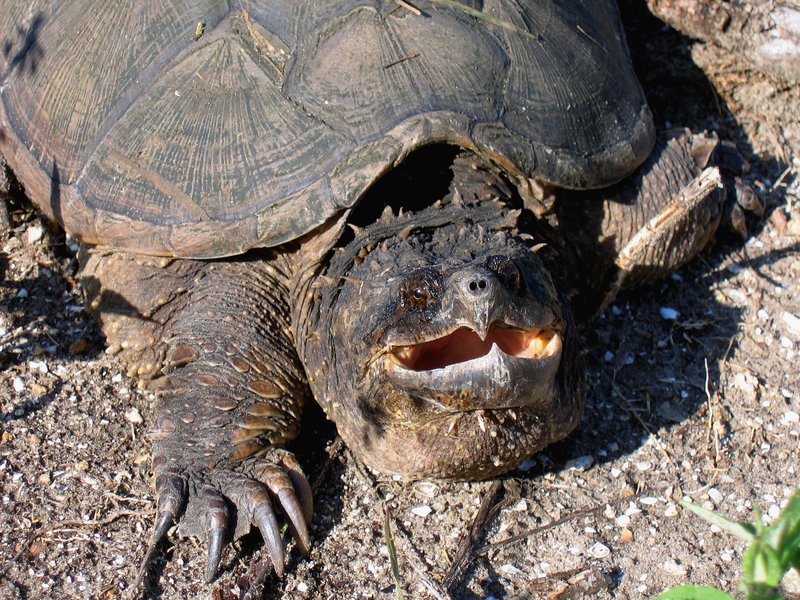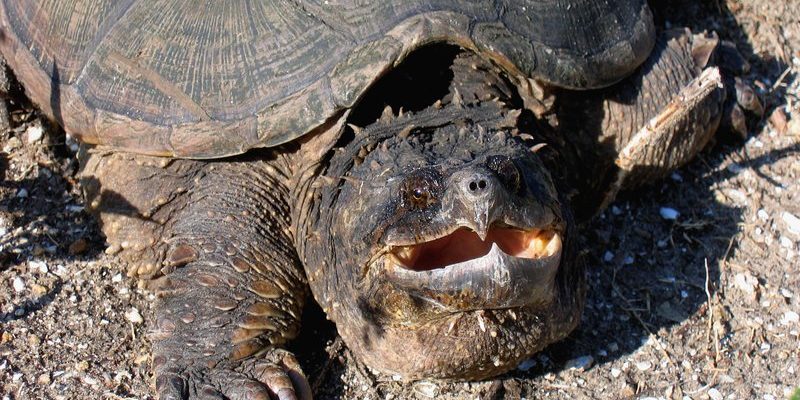
Imagine snapping turtles as the turtles of your childhood stories, but with a twist. They inhabit freshwater lakes, rivers, and ponds, not to mention their impressive size—adults can weigh up to 200 pounds! Unfortunately, their massive presence in our ecosystems doesn’t mean they’re thriving. In fact, many populations are declining due to habitat loss, pollution, and human activities. Let’s take a closer look at their status and the vital conservation efforts aimed at protecting these unique creatures.
What’s Happening with Snapping Turtles?
Snapping turtles, known scientifically as *Chelydra serpentina*, are an essential part of their aquatic ecosystems. They play a crucial role in controlling populations of fish and aquatic plants. But here’s where it gets tricky: several factors threaten their survival. Over the years, habitat destruction has significantly impacted their numbers. Urbanization, agriculture, and climate change have led to the loss of preferred environments for these turtles.
Pollution is another pressing concern. Water pollution from agricultural runoff and industrial waste can lead to toxic environments for snapping turtles. These toxins don’t just hurt the turtles; they can disrupt the entire food chain. Imagine the ripple effect on the ecosystem! It’s like pulling a string on a sweater; once one part unravels, the whole thing can come apart.
Another major issue is hunting and poaching. While some cultures consider snapping turtles a delicacy, illegal hunting can lead to a sharp decline in their population. Sadly, their shells are also highly sought after for decorative items.
Are Snapping Turtles Endangered?
So, what’s the official word on their conservation status? According to the International Union for Conservation of Nature (IUCN), snapping turtles are not classified as endangered on a global scale. However, that doesn’t mean they’re out of the woods. In some regions, particularly where suitable habitats have been severely impacted, they do face endangerment.
In the United States, the situation varies by state. Certain populations are more vulnerable than others, depending on local environmental conditions and human threats. For instance, some states have fishing regulations in place to protect snapping turtles, while others have fewer protections. You might think of this like watering a garden; without consistent care, some plants will thrive while others struggle.
What Makes Them Unique?
You might wonder why snapping turtles are so important to our ecosystems. For starters, they are opportunistic feeders, munching on everything from aquatic plants to small fish. This versatility helps maintain a balanced environment. Moreover, their thick, armored shells not only protect them but also serve as habitats for algae and tiny creatures, creating a mini-ecosystem right on their backs!
Additionally, snapping turtles can live for over 30 years, making them a significant part of their habitats for generations. Their long life spans mean they can witness and adapt to changes in their environments, but that also means the threats they face can have lasting effects.
Conservation Efforts for Snapping Turtles
Many organizations are working tirelessly to ensure the survival of snapping turtles. Conservation efforts include habitat restoration and protection, education, and legislative actions aimed at regulating hunting and pollution. It’s like putting together a puzzle; each piece is essential to completing the picture of a healthy ecosystem.
Habitat restoration focuses on cleaning up polluted waters and creating protected areas where turtles can thrive. This could be akin to trying to revitalize a garden plot that’s been neglected—removing debris, providing clean water, and planting native species can support the local turtles and other wildlife.
Education is crucial too. Many conservation groups run programs to teach the public about snapping turtles, their role in the ecosystem, and how to help. When people understand the importance of these creatures, they’re more likely to support efforts to protect them.
How You Can Help
Feeling motivated to take action? Here are some ways you can contribute to snapping turtle conservation:
- Be an Advocate: Support local conservation organizations and initiatives aimed at protecting aquatic habitats.
- Practice Responsible Recreation: When enjoying lakes and rivers, be mindful of litter and environmental impact.
- Educate Others: Share information about snapping turtles and their needs with friends and family.
- Report Violations: If you see illegal hunting or pollution, report it to local authorities.
Even small actions can make a big difference. Think of it like a domino effect; when one person takes action, it inspires others to do the same.
Success Stories and Future Prospects
There have been promising success stories in snapping turtle conservation. In some areas, concerted efforts have resulted in population rebounds. For example, habitat restoration projects where native plants were reintroduced have shown a positive impact on local snapping turtle populations. It’s like giving a struggling garden a fresh start!
Moreover, community engagement plays a vital role. When locals get involved, whether through clean-up events or educational workshops, it fosters a sense of ownership over local wildlife and habitats. This connection to nature can be powerful.
While there’s still a long way to go, the combined efforts of conservationists, local communities, and concerned citizens can help ensure that snapping turtles continue to thrive. Hope springs eternal, and with the right focus, we can keep these remarkable creatures on our planet for generations to come.
In summary, snapping turtles are fascinating reptiles with unique ecological roles. While they aren’t globally endangered, many populations face serious threats, making conservation efforts crucial. By understanding the challenges they face and taking action to protect their habitats, we can all contribute to preserving these ancient turtles. Let’s work together to safeguard their future—after all, every little effort counts in making our world a better place for snapping turtles and their ecosystems!

